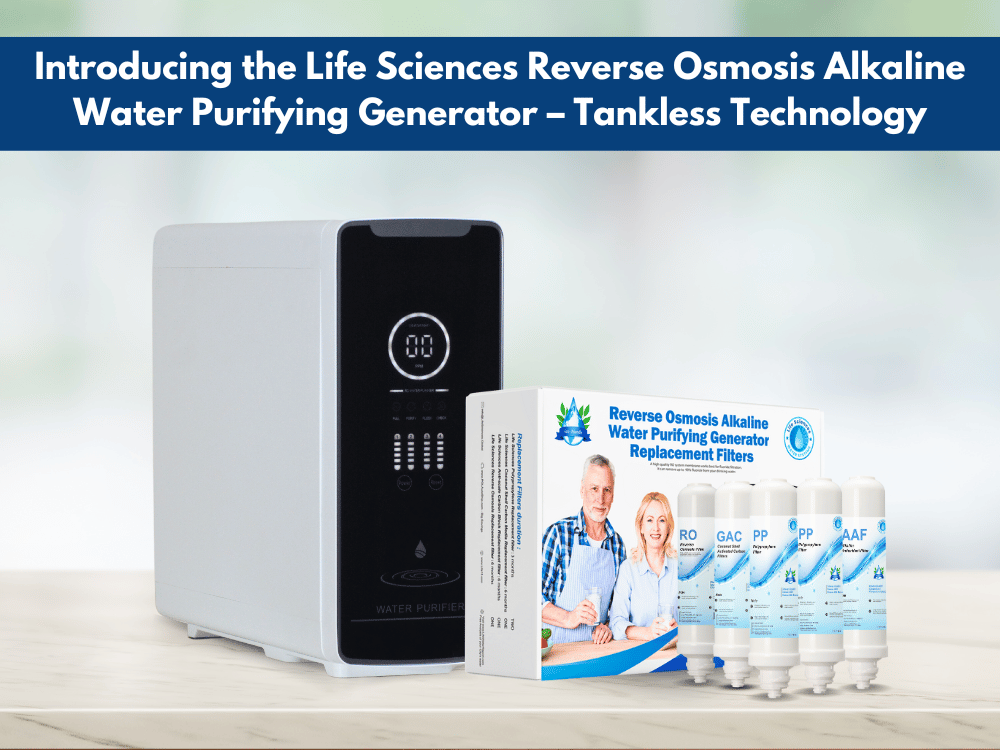When it comes to workplace safety and industrial health, knowledge is power. Hexavalent Chromium (Cr(VI)), a toxic compound commonly found in industrial settings, demands our attention. Hexavalent Chromium health effects are explained in this article. and The sources of contamination in tap water with Hexavalent Chromium.
Chromium’s Elemental Identity
Chromium, represented by the chemical symbol Cr, is ubiquitous in our environment, found in rocks, soil, water, plants, and animals. It’s essential to understand that chromium exists in various oxidation states, which determine its toxicity. The two primary forms of chromium we encounter are trivalent chromium (chromium III) and hexavalent chromium (chromium VI).

Source of Hexavalent Chromium Exposure
Exposure to chromium can happen through inhalation, ingestion, or direct skin contact. Possible sources include air, food, water, and contaminated soil and groundwater.
Industrial Discharges
- Industries using Hexavalent Chromium, e.g., stainless steel production, electroplating, and textile dye manufacturing, can release it into the environment through wastewater discharges.
- Without adequate treatment, Hexavalent Chromium can enter local water bodies and contaminate the public water supply.
Corroded Plumbing
- Corrosion of plumbing materials, particularly in older pipes or fixtures, can introduce Hexavalent Chromium into tap water.
- Plumbing materials may contain Chromium VI from manufacturing processes. Over time, deterioration can lead to Hexavalent Chromium leaching into the water supply.
Natural Occurrence
- In some regions, Hexavalent Chromium naturally occurs in groundwater.
- Public water systems that draw water from underground sources may have naturally occurring Hexavalent Chromium in the tap water if proper treatment measures aren’t in place to remove the contaminant.
Inhalation
In the U.S., the OSHA PEL for airborne exposures to hexavalent chromium is 5 μg/m3 (0.0050 mg/m3).
It’s worth noting that tobacco smoke contains hexavalent chromium, making smoking in enclosed spaces the primary source of airborne hexavalent chromium exposure for the general population.

Health Effects of Hexavalent Chromium Exposure
Hexavalent Chromium is a compound with a long list of health hazards for those exposed to it.
Respiratory Effects
It can irritate the nose, throat, and lungs, leading to various issues. Repeated or prolonged exposure can damage the nasal mucous membranes, resulting in ulcers.
In severe cases, prolonged exposure can even lead to the perforation of the nasal septum, which is the wall separating the nasal passages.
Eye Health
Direct eye contact with chromic acid or chromate dusts can cause permanent eye damage. It’s crucial to avoid eye contact with dusts, fumes, smoke, liquids, mists, and aerosols containing Hexavalent Chromium to protect your eyes.
Dermatological Effects
Prolonged skin contact with Hexavalent Chromium can result in dermatitis and skin ulcers. Furthermore, some workers may develop allergic reaction to Hexavalent Chromium. In these cases, even small amounts of exposure can lead to a serious skin rash.
Chronic Exposure and Cancer Risks
Hexavalent Chromium exposure is particularly concerning for its association with cancer. All Hexavalent Chromium compounds are carcinogenic to workers. The risk of developing lung, nasal, and sinus cancer increases with the amount of Hexavalent Chromium inhaled and the duration of exposure.
Studies of workers in various industries, including chromate production, chromate pigment, and chrome electroplating, have shown increased rates of lung cancer mortality. These findings are supported by studies involving animals exposed to Hexavalent Chromium compounds directly in their lungs.
Preventive Measures and Regulations
- Use Protective Equipment: In occupational settings where Hexavalent Chromium is used, workers should wear appropriate personal protective equipment (PPE), including gloves, eye protection, and respiratory masks to prevent skin and inhalation exposure.
- Proper Ventilation: Ensure that workplaces have adequate ventilation systems to remove airborne Hexavalent Chromium particles and fumes.
- Water Treatment: Adequate water treatment is crucial in removing Hexavalent Chromium from water sources. Water treatment with a Reverse Osmosis System is an effective way of removing Hexavalent Chromium from water. This system uses a pressure-driven membrane to separate Hexavalent Chromium from water. The membrane is highly efficient and can remove even small amounts Hexavalent Chromium.
- Infrastructure Upgrades: Replacing old and corroded plumbing materials with newer, safer alternatives can reduce the risk of Hexavalent Chromium leaching into tap water.
- Regulation and Monitoring: Stringent regulations and regular water quality monitoring are essential to ensure that public water systems meet safety standards and take necessary corrective actions if contamination is detected.
For Free Water Quality analysis report visit our website Life Water Report https://
Filtering Out Hexavalent Chromium (Cr(VI)) from Your Drinking Water
Hexavalent Chromium is a harmful contaminant that requires effective filtration methods for removal. Here are some top filter media and methods to eliminate Cr(VI) from your drinking water:
- Ion Exchange Resins: Specifically, strong base anion exchange resins are known for their effectiveness in removing Cr(VI) from water. These resins work by exchanging hexavalent chromium ions for other anions, making them an excellent choice for Cr(VI) removal.
- Activated Alumina: Activated alumina is another reliable medium for Cr(VI) removal. It can adsorb Cr(VI) from water.
- Modified Activated Carbon: Some types of activated carbon can be modified to enhance their affinity for Cr(VI). These modified activated carbon filters are designed to target and adsorb hexavalent chromium, making them a potential solution for Cr(VI) removal.
In addition to these specific filter media, Reverse Osmosis (RO) is another effective method to remove a wide range of contaminants, including Hexavalent Chromium. RO systems are capable of removing 85-95% or more of Cr(VI) from water.

Introducing the Life Sciences Reverse Osmosis Alkaline Water Purifying Generator – Tankless Technology, an innovative solution for clean, pure water. This cutting-edge system offers a tankless design, ensuring continuous purified water flow.
It features a 5-filter system that effectively removes contaminants, including fluoride, and hexavalent chromium, and adds essential minerals. This results in alkaline mineral water with verified 40 health benefits.
Lifetime Warranty – We Build it Better! Our RO carbon media is Certified NSF/ANSI 42 and NSF/ANSI 61, optimizing our Alkaline Mineral Water Purification System purification.
Bonus: Don’t miss the limited-time introductory offer, which includes free shipping and a Borosilicate Glass Life Water Pitcher. It’s a powerful and convenient way to enjoy pure, healthy water. visit this link
In Summary
Hexavalent Chromium is a potent industrial chemical with the potential to cause severe health issues, including respiratory problems, eye damage, dermatitis, and even cancer.
Understanding these health effects and taking preventative measures is paramount. By staying informed and adhering to safety regulations, we can mitigate the risks associated with Hexavalent Chromium exposure, ensuring a safe working environment for all.
As water quality in the United States gradually deteriorates, with an increase in toxic chemicals and contaminants each year, the Life Water Report recognized the need for higher filtration capabilities. For more information Click here
https://lifewaterreport.com/
- Georgaki, Maria, et al. “Chromium in Water and Carcinogenic Human Health Risk.” Environments, vol. 10, no. 2, 2023, p. 33, https://doi.org/10.3390/
environments10020033. Accessed 25 Oct. 2023. - Kabdaşlı, Işık, and Olcay Tünay. “Hexavalent Chromium Removal from Water and Wastewaters by Electrochemical Processes: Review.” Molecules, vol. 28, no. 5, 2022, p. 2411, https://doi.org/10.3390/
molecules28052411. Accessed 25 Oct. 2023. - Sharma, Pooja, et al. “Health Hazards of Hexavalent Chromium (Cr (VI)) and Its Microbial Reduction.” Bioengineered, vol. 13, no. 3, 2022, pp. 4923-4938, https://doi.org/10.
1080/21655979.2022.2037273. Accessed 25 Oct. 2023. - Wise, John P., et al. “Current Understanding of Hexavalent Chromium [Cr(VI)] Neurotoxicity and New Perspectives.” Environment International, vol. 158, 2021, p. 106877, https://doi.org/10.
1016/j.envint.2021.106877. Accessed 25 Oct. 2023.
